Introduction
What Temperature Can Guinea Pigs Be Outside: Guinea pigs, those adorable and social rodents, are beloved pets in households all over the world. Their charming personalities and fuzzy appearances make them a popular choice for families looking to add a small, low-maintenance pet to their home. However, one that often arises among guinea pig owners. This inquiry is crucial to the well-being and health of these gentle creatures, as it determines whether they can enjoy the great outdoors or if they should remain indoors. Guinea pigs, scientifically known as Cavia porcellus, originate from the Andes Mountains in South America, where they are accustomed to a relatively mild climate. This fact is essential to consider when contemplating taking your guinea pig outdoors. Unlike many other domesticated animals, such as dogs or cats, guinea pigs are not well-equipped to handle extreme temperatures.
Their small size, limited body fat, and dense fur coat make them vulnerable to both heat and cold. Therefore, understanding the optimal temperature range for guinea pigs is paramount for their welfare. In the specifics of the temperature requirements for guinea pigs stay, considering both hot and cold weather conditions. We will explore the signs of distress that these animals may exhibit when exposed to extreme temperatures and offer on how to create a comfortable environment for your guinea pig, whether inside or outside your home.
Whether you’re a seasoned guinea pig owner or contemplating bringing one of these delightful creatures into your family, it’s essential to be well-informed about their temperature needs. This will ensure that your furry friend enjoys a happy and healthy life, whether they’re basking in the warmth of a sunny day or staying cozy during a chilly evening. So, let’s embark on this journey to uncover the ideal temperature range for guinea pigs and discover how to keep them content, safe, and comfortable in any climate.
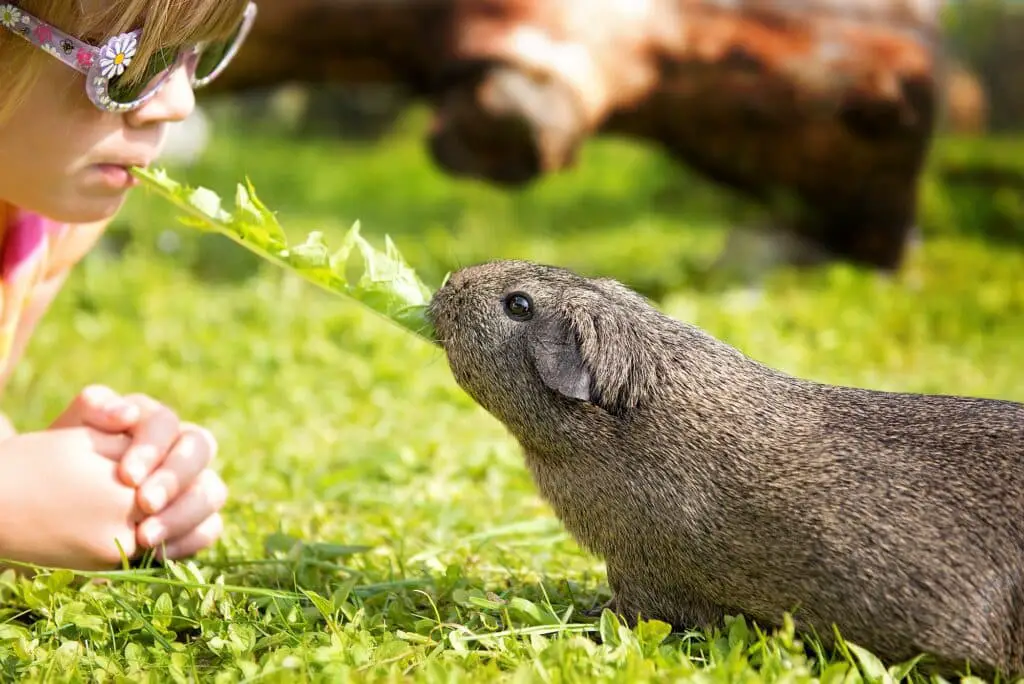
How cold is too cold for guinea pigs?
Your Guinea Pig’s Preferred Climate
Some rodents, like ground squirrels or Eastern chipmunks, hibernate when the weather turns cold, but guinea pigs don’t. Instead, guinea pigs are most comfortable in air temperatures of about 65°F to 75°F. Anything below about 60°F is probably too cold for your pig.
Adequate Bedding: Ensure that your guinea pig’s enclosure has plenty of warm bedding material, such as hay, to help insulate them from the cold floor. A shelter or hideout within their enclosure where they can retreat to stay warm. This could be a small house or a hidey-hole filled with soft bedding.
Limit Drafts: Keep their living area away from drafty windows or doors. Guinea pigs are susceptible to drafts, which can cause them to become chilled. In extremely cold weather, consider using a heat lamp or pad designed for small animals. However, be cautious with heat sources to avoid overheating or burns.
Regular Monitoring: Pay close attention to your guinea pig’s behavior and health during cold spells. Signs of discomfort include shivering, huddling, and reduced activity. If you notice any of these signs, it’s time to take action to warm them up.
Consider Indoor Housing: In regions with harsh winters, it might be best to bring your guinea pig indoors during the coldest months. A room with a stable, comfortable temperature is ideal for their well-being.
What temperatures can guinea pigs tolerate?
This Animal Care Aid is part of a series developed to promote optimal guinea pig care and health. Guinea pigs are very sensitive to both heat and cold. Keep them in temperatures between 60 and 85 °F to avoid putting their health at risk.
Guinea pigs are most comfortable in temperatures ranging from 65°F to 75°F (18°C to 24°C). Within this range, they can go about their daily activities without experiencing stress or discomfort. This is considered their “sweet spot” for temperature.
Guinea pigs can tolerate slightly cooler temperatures down to around 60°F (15°C) if they have appropriate shelter and bedding to keep warm. However, it’s essential to monitor their behavior and health closely when the temperature drops below this level.
Guinea pigs are more sensitive to heat than cold. They lack efficient cooling mechanisms like sweating and can quickly become stressed and overheated in hot weather. Temperatures above 80°F (27°C) can be particularly problematic for them. Signs of heat stress include heavy panting, lethargy, and loss of appetite.
While guinea pigs can handle cooler temperatures better than extreme heat, they are still vulnerable to the cold. When temperatures drop below 60°F (15°C), they may exhibit signs of discomfort, such as huddling together, shivering, or reduced activity. Prolonged exposure to colder conditions can lead to health issues, including hypothermia.
Is it OK to leave guinea pigs outside?
Outdoor accommodation – if you’re keeping your guinea pigs outside, their hutch should be sheltered from direct sun and direct wind. In temperatures below 15°C, you should move them indoors. They’ll also need sufficient bedding throughout the whole enclosure to keep them warm.
Temperature Extremes: Extreme temperatures, whether hot or cold, can be harmful to guinea pigs. They may struggle to regulate their body temperature in outdoor conditions. Outdoor enclosures are susceptible to potential predators like birds, cats, and even larger rodents. Adequate protection is essential.
Weather Challenges: Rain, wind, and other weather elements can make outdoor living uncomfortable for guinea pigs and expose them to health risks. Guinea pigs are social animals that benefit from interaction with their human caregivers. Outdoor living may reduce the frequency of interaction and bonding opportunities.
Secure Enclosure: Ensure that the outdoor enclosure is predator-proof, with secure walls or fencing and a roof or netting to prevent escape and protect against birds and other animals. Guinea pigs with a waterproof shelter that shields them from rain, wind, and direct sunlight.
Temperature Management: Implement temperature control measures, such as heat lamps for cold weather and shade for hot weather. Monitor temperatures regularly. Check on your guinea pigs frequently to ensure they are safe, comfortable, and healthy. Be alert to signs of distress or illness. Ensure a constant supply of clean water and a balanced diet. Outdoor guinea pigs may need nutrition due to increased activity.
How do I know if my guinea pig is cold?
You can tell if your guinea pig is suffering from the cold if they are shivering, sleeping longer or being more lethargic than normal, less interested in food & drink, and they have cold feet, ears, and a cold nose.
Just like humans, guinea pigs shiver when they’re cold. If you notice your guinea pig trembling or shivering, it’s a clear indicator that they are feeling chilly. Guinea pigs are social animals, and they often cuddle with their cage mates for warmth. If your guinea pig is huddled with its cage mates or is seeking corners or hiding spots, it may be trying to stay warm.
Feel your guinea pig’s ears and paws. If they feel noticeably cold to the touch, it’s a sign that their body temperature is dropping. Cold temperatures can make guinea pigs sluggish and less active. If your pet is moving less than usual or seems lethargic, it could be due to the cold.
A guinea pig that is too cold may lose its appetite. If your pet is not eating or drinking as usual, it’s a sign of distress. Guinea pigs have the ability to fluff up their fur in an attempt to trap warm air close to their bodies. If you notice your guinea pig’s fur standing on end, it’s a sign that they are trying to stay warm.
Extremely cold conditions can cause guinea pigs to breathe rapidly or seem to struggle with their breathing. This is a severe sign of distress and requires immediate action. A cold guinea pig may crouch low to the ground or curl up into a ball to conserve body heat.
Is 10 degrees Celsius too cold for guinea pigs?
Check the temperature of the guinea pig’s environment; ideally the temperature range should be between 16-24°C/60.8-75.2°F, although healthy guinea pigs can cope with temperatures down to around 10°C/50°F. If your guinea pig is ill then ensure you provide extra warmth or bring them inside.
Adequate Shelter: Ensure that your guinea pigs have a well-insulated and draft-free enclosure. A sheltered hutch or cage with a solid roof and walls can help protect them from cold winds and dampness.
Add Extra Bedding: Offer plenty of warm, dry bedding material such as hay, straw, or fleece blankets to create a cozy nest for your guinea pigs. In colder weather, consider using a pet-safe heat pad or a heat lamp placed at a safe distance from your guinea pigs’ enclosure to warmth.
Monitor Their Health: Keep a close eye on your guinea pigs for any signs of discomfort or illness. If they display shivering, huddling, or a lack of appetite, take action to warm them up immediately.
Limit Outdoor Exposure: If the temperature is consistently around 10 degrees Celsius, it’s advisable to limit outdoor playtime and consider bringing your guinea pigs indoors or providing them with an indoor enclosure during the coldest months.
Are guinea pigs active at night?
As we briefly touched on, guinea pigs can sleep both during the day and night, making them part diurnal and part nocturnal. However, piggies are especially active early in the morning and early in the evening, so we can more accurately define them as crepuscular.
Diurnal Behavior: Guinea pigs are naturally diurnal, which means they are most active during the daylight hours. In their native habitat of the Andes Mountains in South America, they forage for food, socialize, and engage in various activities during the day.
Limited Nighttime Activity: Guinea pigs may exhibit some minimal activity during the night, such as shifting positions or occasionally eating or drinking. However, this activity is usually sporadic and not as intense as their daytime behavior.
Adaptation to Light: Guinea pigs are sensitive to light, and their activity patterns are influenced by the presence of natural or artificial light. They tend to become more active when exposed to light and less active in darkness.
Cautious Behavior: Guinea pigs are prey animals in the wild, which makes them naturally cautious and alert to potential predators. This instinctual behavior includes seeking shelter and being less active during the night when visibility is reduced.
Do guinea pigs like the dark?
They could be up at two in the morning running around with each other, or asleep at eight in the morning and up again an hour later. It’s safe to say that guinea pigs enjoy the dark at least, but we’d even go as far as to say they prefer the dark!
Natural Lighting: Guinea pigs are naturally diurnal animals, which means they are most active during daylight hours. In their native habitat of the Andes Mountains in South America, they are exposed to natural light cycles. Therefore, providing a well-lit environment during the day is essential to mimic their natural behavior and promote their well-being.
Light Exposure: Guinea pigs do not require constant exposure to bright light, but they benefit from a consistent day-night cycle. This helps regulate their internal body clocks, hormone production, and activity patterns. Having a routine that includes exposure to natural daylight during the day and a period of darkness at night is ideal.
Avoid Harsh Direct Sunlight: While guinea pigs need light, they should be protected from harsh, direct sunlight, as they can easily become overheated. Ensure that their enclosure has shaded areas to escape the sun’s direct rays.
Artificial Lighting: In indoor environments, artificial lighting can be used to ensure guinea pigs have an appropriate day-night cycle. Soft, ambient lighting during the evening can help transition them to their quieter and less active nighttime period.
Are guinea pigs happier inside or outside?
Guinea pigs housed indoors don’t live any longer than outdoor guinea pigs. There are equal benefits of both accommodation preferences. As long as you’re meeting the five welfare needs for your piggies, they’ll live happy and healthy lives.
Temperature Control: Indoors, you can control the temperature to a stable and comfortable environment for guinea pigs year-round, avoiding extremes of heat and cold. Guinea pigs are prey animals, and indoor enclosures offer complete protection from predators such as birds, cats, and rodents.
Reduced Exposure to Illness: Guinea pigs are less likely to be exposed to diseases or parasites carried by wild animals when kept indoors. Indoor guinea pigs are more likely to have regular social interaction with their human caregivers, which they enjoy as social animals.
Consistent Light Cycle: You can regulate the lighting to mimic natural day-night cycles, which is beneficial for guinea pigs’ mental and physical health. Indoor cages may have limited space compared to outdoor setups, which could affect their physical activity.
Odor Management: Indoor enclosures may require more attention to odor control due to the confined space. Some people may have allergies to hay or guinea pig bedding materials, which can be more noticeable indoors. Outdoor enclosures can offer larger living spaces, allowing guinea pigs more room to exercise and explore.
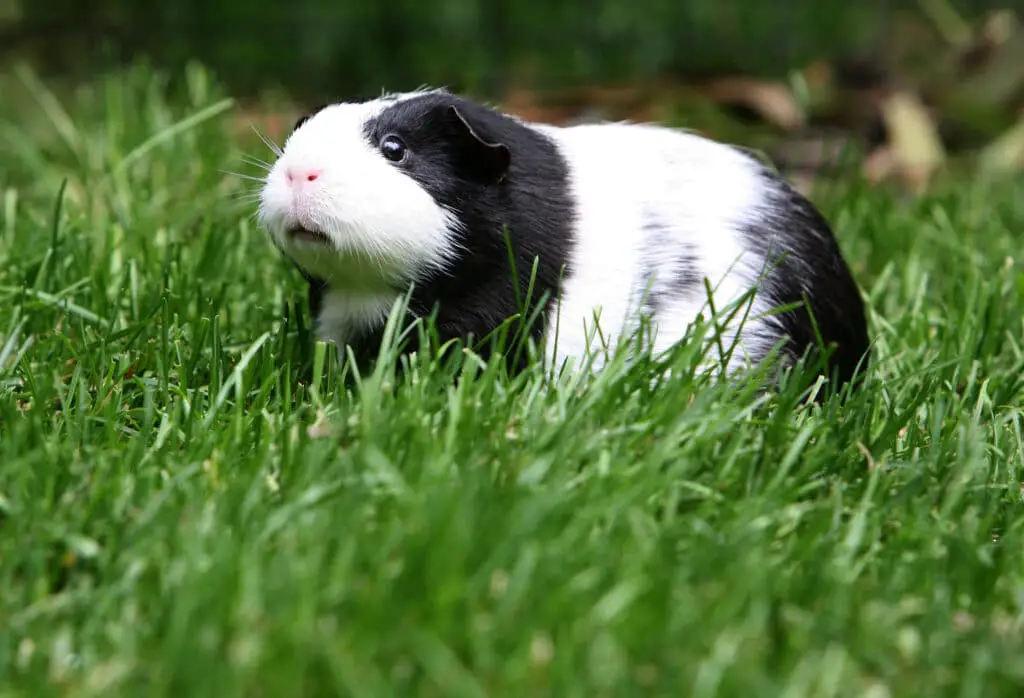
Conclusion
The temperature requirements for guinea pigs is essential for their well-being and happiness as beloved pets. These small, sensitive creatures are not well-suited to extreme temperatures, and providing them with a comfortable environment is crucial to ensure their health and longevity. When it comes to guinea pigs and outdoor exposure, it’s that their natural habitat in the Andes Mountains of South America offers a relatively mild climate. This means that they are highly susceptible to both hot and cold temperatures. Guinea pigs are particularly sensitive to heat, as their bodies lack effective cooling mechanisms, such as sweating.
In hot weather, they can quickly become stressed, dehydrated, and even suffer from heatstroke. On the flip side, they are equally vulnerable to the cold, which can lead to hypothermia and other health issues. To the best care for your guinea pig, it’s crucial to be aware of the temperature range that suits them best. Generally, guinea pigs thrive in temperatures between 65°F and 75°F (18°C to 24°C). Within this range, they are most comfortable and can go about their daily pigs activities without stress. When temperatures exceed or fall below this range, it’s essential to take precautionary measures.
During hot weather, plenty of shade, fresh water, and consider bringing your guinea pig indoors or into a well-ventilated, cool space. In cold weather, ensure they have adequate bedding, insulation, and protection from drafts. Monitoring their behavior and health is also essential, as guinea pigs will often display signs of discomfort in extreme temperatures, such as excessive panting in the heat or huddling in the cold. In essence, guinea pig owners should prioritize the safety and comfort of their furry friends, making necessary adjustments to their living conditions as the seasons change. By being attentive to temperature requirements and a suitable environment, you can ensure that your guinea pig enjoys a happy and healthy life as a cherished member of your family.

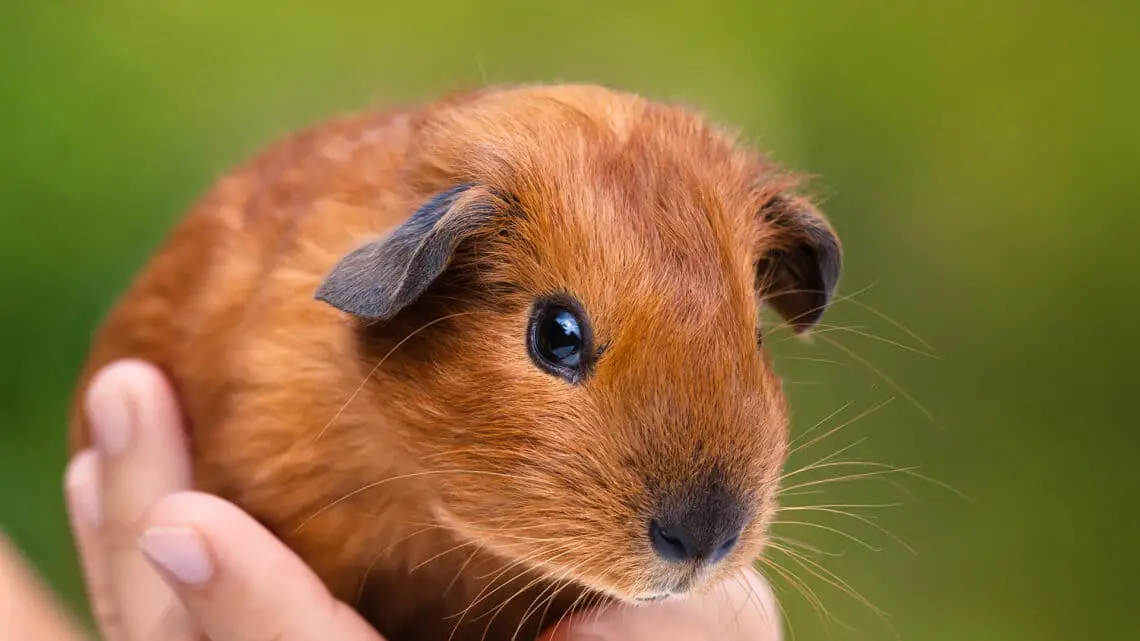
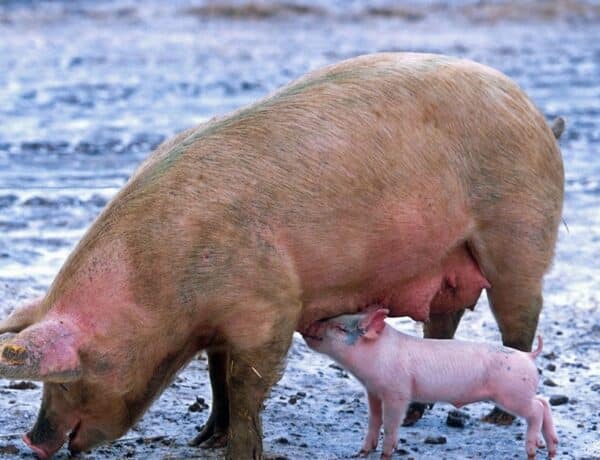
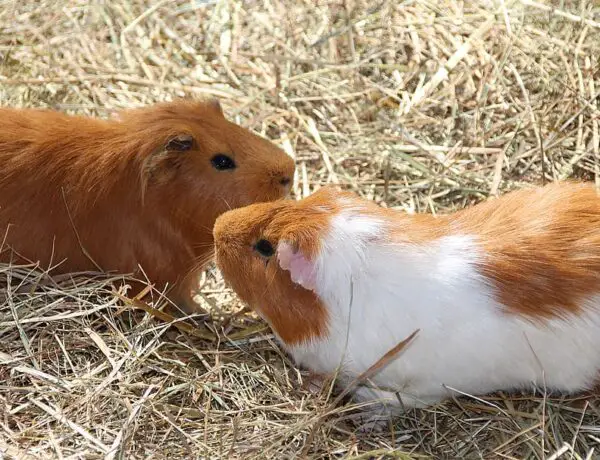
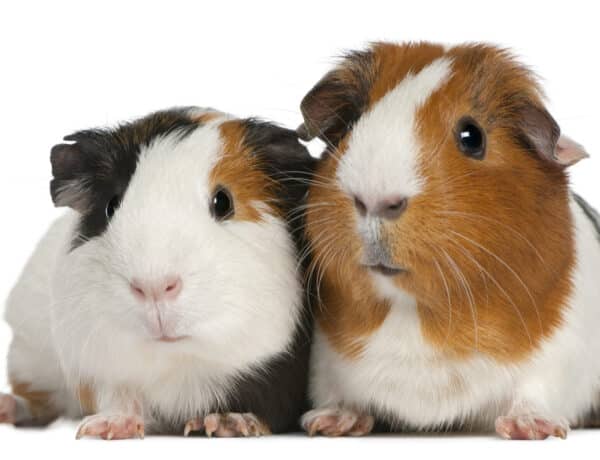
No Comments